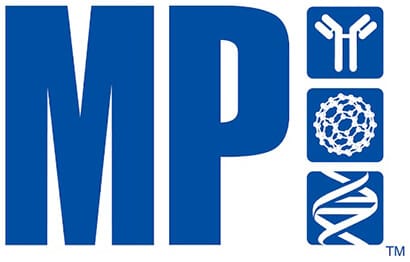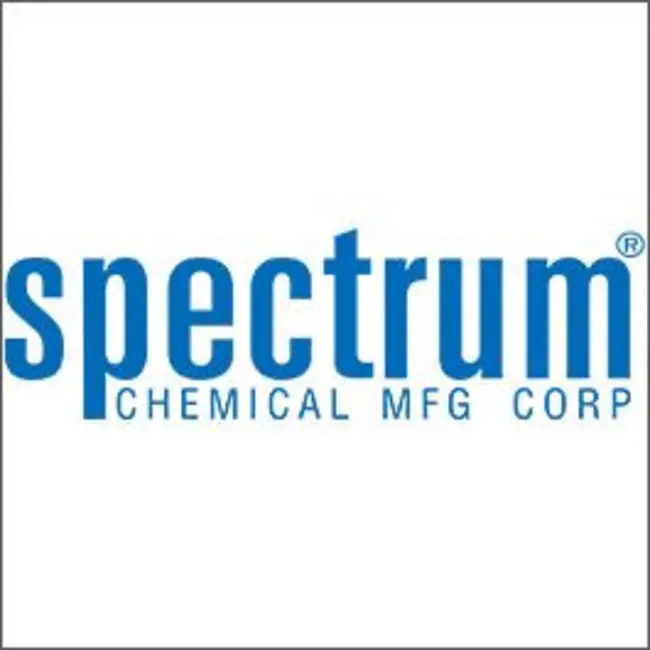GenScript Biotech
Showing 1501–1550 of 2554 results
-
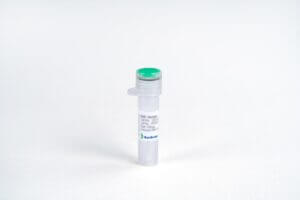
IL-9, Mouse
$340.69 Add to cart View Product DetailsInterleukin 9, also known as IL9, is a cytokine (cell signalling molecule) belonging to the group of interleukins. The protein encoded by this gene is a cytokine produced by T-cells and specifically by CD4+ helper cells that acts as a regulator of a variety of hematopoietic cells. This cytokine stimulates cell proliferation and prevents apoptosis. It functions through the interleukin-9 receptor (IL9R), which activates different signal transducer and activator (STAT) proteins and thus connects this cytokine to various biological processes. The gene encoding this cytokine has been identified as a candidate gene for asthma. Genetic studies on a mouse model of asthma demonstrated that this cytokine is a determining factor in the pathogenesis of bronchial hyperresponsiveness.
-

IL6 (55C6), mAb, Mouse
$172.50 Add to cart View Product DetailsInterleukin-6 (IL6) is a multi-functional cytokine, produced by variety of cells including T-cells, B-cells, monocytes, fibroblasts, keratinocytes, endothelial cells, mesangial cells, astrocytes and bone marrow stroma cells. It is involved in the induction of B-cell differentiation, growth promotion of myeloma cells and proliferation and differentiation of T cells. IL6 can regulate immune responses, acute phase reactions and hematopoiesis.
-

IL6 (55C6), mAb, Mouse
$1,725.00 Add to cart View Product DetailsInterleukin-6 (IL6) is a multi-functional cytokine, produced by variety of cells including T-cells, B-cells, monocytes, fibroblasts, keratinocytes, endothelial cells, mesangial cells, astrocytes and bone marrow stroma cells. It is involved in the induction of B-cell differentiation, growth promotion of myeloma cells and proliferation and differentiation of T cells. IL6 can regulate immune responses, acute phase reactions and hematopoiesis.
-

IL6 (55C6), mAb, Mouse
$14,662.50 Add to cart View Product DetailsInterleukin-6 (IL6) is a multi-functional cytokine, produced by variety of cells including T-cells, B-cells, monocytes, fibroblasts, keratinocytes, endothelial cells, mesangial cells, astrocytes and bone marrow stroma cells. It is involved in the induction of B-cell differentiation, growth promotion of myeloma cells and proliferation and differentiation of T cells. IL6 can regulate immune responses, acute phase reactions and hematopoiesis.
-

IL6 (55E9), mAb, Mouse
$172.50 Add to cart View Product DetailsInterleukin-6 (IL6) is a multi-functional cytokine, produced by variety of cells including T-cells, B-cells, monocytes, fibroblasts, keratinocytes, endothelial cells, mesangial cells, astrocytes and bone marrow stroma cells. It is involved in the induction of B-cell differentiation, growth promotion of myeloma cells and proliferation and differentiation of T cells. IL6 can regulate immune responses, acute phase reactions and hematopoiesis.
-

IL6 (55E9), mAb, Mouse
$1,725.00 Add to cart View Product DetailsInterleukin-6 (IL6) is a multi-functional cytokine, produced by variety of cells including T-cells, B-cells, monocytes, fibroblasts, keratinocytes, endothelial cells, mesangial cells, astrocytes and bone marrow stroma cells. It is involved in the induction of B-cell differentiation, growth promotion of myeloma cells and proliferation and differentiation of T cells. IL6 can regulate immune responses, acute phase reactions and hematopoiesis.
-

IL6 (55E9), mAb, Mouse
$14,662.50 Add to cart View Product DetailsInterleukin-6 (IL6) is a multi-functional cytokine, produced by variety of cells including T-cells, B-cells, monocytes, fibroblasts, keratinocytes, endothelial cells, mesangial cells, astrocytes and bone marrow stroma cells. It is involved in the induction of B-cell differentiation, growth promotion of myeloma cells and proliferation and differentiation of T cells. IL6 can regulate immune responses, acute phase reactions and hematopoiesis.
-
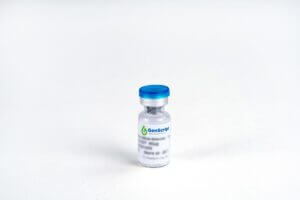
Insulin Antibody (6E9F1), mAb, Mouse
$93.15 Add to cart View Product DetailsGenScript Insulin Antibody (6E9F1), mAb, Mouse detects human Insulin and slightly recognizes proinsulin, it has no cross-reactivity with C-peptide.
-
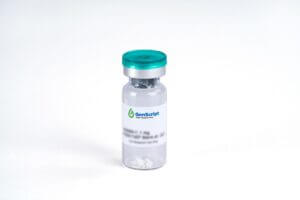
Insulin, Bovine
$2,264.06 Add to cart View Product DetailsInsulin is a peptide hormone produced exclusively by beta cells of the pancreatic islets. The mature form of insulin is a heterodimer of a B chain and an A chain linked by two disulfide bonds. The amino acid sequence of insulin is strongly conserved and varies only slightly between species. Bovine insulin differs from human in only three amino acid residues, and porcine insulin in one. Insulin is considered to be the main anabolic hormone of the body and regulates the metabolism of carbohydrates, fats and protein by promoting the absorption of glucose from the blood into liver, fat and skeletal muscle cells. Decreased or absent insulin activity results in diabetes. Recombinant insulin has been widely used for treatment of diabetes.
-

Insulin, Bovine
$340.69 Add to cart View Product DetailsInsulin is a peptide hormone produced exclusively by beta cells of the pancreatic islets. The mature form of insulin is a heterodimer of a B chain and an A chain linked by two disulfide bonds. The amino acid sequence of insulin is strongly conserved and varies only slightly between species. Bovine insulin differs from human in only three amino acid residues, and porcine insulin in one. Insulin is considered to be the main anabolic hormone of the body and regulates the metabolism of carbohydrates, fats and protein by promoting the absorption of glucose from the blood into liver, fat and skeletal muscle cells. Decreased or absent insulin activity results in diabetes. Recombinant insulin has been widely used for treatment of diabetes.
-

IP-10/CXCL10, Human
$957.38 Add to cart View Product DetailsIP-10/CXCL10 also known as CXCL10, is originally identified as an IFN-γ-inducible gene in monocytes, fibroblasts and endothelial cells. It has since been shown that IP-10 mRNA is also induced by LPS, IL-1β, TNF-α, IL-12 and viruses. Additional cell types that have been shown to express IP-10 include activated T-lymphocytes, splenocytes, keratinocytes, osteoblasts, astrocytes, and smooth muscle cells. IP-10 is also expressed in psoriatic and lepromatous lesions of skin. The mouse homologue of human IP-10, Crg-2, has been cloned and shown to share approximately 67% amino acid sequence identity with human IP-10.
-

IP-10/CXCL10, Human
$51.75 Add to cart View Product DetailsIP-10/CXCL10 also known as CXCL10, is originally identified as an IFN-γ-inducible gene in monocytes, fibroblasts and endothelial cells. It has since been shown that IP-10 mRNA is also induced by LPS, IL-1β, TNF-α, IL-12 and viruses. Additional cell types that have been shown to express IP-10 include activated T-lymphocytes, splenocytes, keratinocytes, osteoblasts, astrocytes, and smooth muscle cells. IP-10 is also expressed in psoriatic and lepromatous lesions of skin. The mouse homologue of human IP-10, Crg-2, has been cloned and shown to share approximately 67% amino acid sequence identity with human IP-10.
-

IP-10/CXCL10, Human
$133.69 Add to cart View Product DetailsIP-10/CXCL10 also known as CXCL10, is originally identified as an IFN-γ-inducible gene in monocytes, fibroblasts and endothelial cells. It has since been shown that IP-10 mRNA is also induced by LPS, IL-1β, TNF-α, IL-12 and viruses. Additional cell types that have been shown to express IP-10 include activated T-lymphocytes, splenocytes, keratinocytes, osteoblasts, astrocytes, and smooth muscle cells. IP-10 is also expressed in psoriatic and lepromatous lesions of skin. The mouse homologue of human IP-10, Crg-2, has been cloned and shown to share approximately 67% amino acid sequence identity with human IP-10.
-

IP-10/CXCL10, Mouse
$2,018.25 Add to cart View Product DetailsTAFA-2 also named FAM19A2 belongs to the TAFA family of chemokinelike proteins. Like other members of the FAM19/TAFA family, with the exception of TAFA5, mature TAFA1 to 4 contain 10 regularly spaced cysteine residues. Human TAFA2 is 97% aa identical to mouse TAFA2. TAFA2 expression can be detected in the central nervous system (CNS), colon, heart, lung, spleen, kidney, and thymus, but its expression in the CNS is 50 to 1000fold higher than in other tissues. Within the CNS, TAFA2 expression is highest in the occipital and frontal cortex (3 to 10fold more abundantly expressed than in other cortical regions) and medulla. The biological functions of TAFA family members remain to be determined, but there are a few tentative hypotheses.
-

IP-10/CXCL10, Mouse
$155.25 Add to cart View Product DetailsTAFA-2 also named FAM19A2 belongs to the TAFA family of chemokinelike proteins. Like other members of the FAM19/TAFA family, with the exception of TAFA5, mature TAFA1 to 4 contain 10 regularly spaced cysteine residues. Human TAFA2 is 97% aa identical to mouse TAFA2. TAFA2 expression can be detected in the central nervous system (CNS), colon, heart, lung, spleen, kidney, and thymus, but its expression in the CNS is 50 to 1000fold higher than in other tissues. Within the CNS, TAFA2 expression is highest in the occipital and frontal cortex (3 to 10fold more abundantly expressed than in other cortical regions) and medulla. The biological functions of TAFA family members remain to be determined, but there are a few tentative hypotheses.
-

IP-10/CXCL10, Mouse
$68.14 Add to cart View Product DetailsTAFA-2 also named FAM19A2 belongs to the TAFA family of chemokinelike proteins. Like other members of the FAM19/TAFA family, with the exception of TAFA5, mature TAFA1 to 4 contain 10 regularly spaced cysteine residues. Human TAFA2 is 97% aa identical to mouse TAFA2. TAFA2 expression can be detected in the central nervous system (CNS), colon, heart, lung, spleen, kidney, and thymus, but its expression in the CNS is 50 to 1000fold higher than in other tissues. Within the CNS, TAFA2 expression is highest in the occipital and frontal cortex (3 to 10fold more abundantly expressed than in other cortical regions) and medulla. The biological functions of TAFA family members remain to be determined, but there are a few tentative hypotheses.
-

KGF/FGF-7, Human
$2,018.25 Add to cart View Product DetailsKeratinocyte Growth Factor (KGF) is a highly specific epithelial mitogen produced by fibroblasts and mesenchymal stem cells. KGF belongs to the heparin binding Fibroblast Growth Factor (FGF) family, and is known as FGF-7. However, in contrast to the FGF-1, which binds to all known FGF receptors with high affinity, KGF only binds to a splice variant of an FGF receptor, FGFR2-IIIb. FGFR2-IIIb is produced by most of the epithelial cells, indicating that KGF plays roles as a paracrine mediator. KGF induces the differen-tiation and proliferation of various epithelial cells, including keratinocytes in the epidermis, hair follicles and sebaceous glands, and is responsible for the wound repairs of various tissues, including lung, bladder, and kidney.
-

KGF/FGF-7, Human
$94.88 Add to cart View Product DetailsKeratinocyte Growth Factor (KGF) is a highly specific epithelial mitogen produced by fibroblasts and mesenchymal stem cells. KGF belongs to the heparin binding Fibroblast Growth Factor (FGF) family, and is known as FGF-7. However, in contrast to the FGF-1, which binds to all known FGF receptors with high affinity, KGF only binds to a splice variant of an FGF receptor, FGFR2-IIIb. FGFR2-IIIb is produced by most of the epithelial cells, indicating that KGF plays roles as a paracrine mediator. KGF induces the differen-tiation and proliferation of various epithelial cells, including keratinocytes in the epidermis, hair follicles and sebaceous glands, and is responsible for the wound repairs of various tissues, including lung, bladder, and kidney.
-

KGF/FGF-7, Human
$271.69 Add to cart View Product DetailsKeratinocyte Growth Factor (KGF) is a highly specific epithelial mitogen produced by fibroblasts and mesenchymal stem cells. KGF belongs to the heparin binding Fibroblast Growth Factor (FGF) family, and is known as FGF-7. However, in contrast to the FGF-1, which binds to all known FGF receptors with high affinity, KGF only binds to a splice variant of an FGF receptor, FGFR2-IIIb. FGFR2-IIIb is produced by most of the epithelial cells, indicating that KGF plays roles as a paracrine mediator. KGF induces the differen-tiation and proliferation of various epithelial cells, including keratinocytes in the epidermis, hair follicles and sebaceous glands, and is responsible for the wound repairs of various tissues, including lung, bladder, and kidney.
-

KGF/FGF-7, Human(CHO-expressed)
$155.25 Add to cart View Product DetailsKeratinocyte Growth Factor (KGF) is a highly specific epithelial mitogen produced by fibroblasts and mesenchymal stem cells. KGF belongs to the heparin binding Fibroblast Growth Factor (FGF) family, and is known as FGF-7. However, in contrast to the FGF-1, which binds to all known FGF receptors with high affinity, KGF only binds to a splice variant of an FGF receptor, FGFR2-IIIb. FGFR2-IIIb is produced by most of the epithelial cells, indicating that KGF plays roles as a paracrine mediator. KGF induces the differen-tiation and proliferation of various epithelial cells, including keratinocytes in the epidermis, hair follicles and sebaceous glands, and is responsible for the wound repairs of various tissues, including lung, bladder, and kidney.
-

KGF/FGF-7, Human(CHO-expressed)
$68.14 Add to cart View Product DetailsKeratinocyte Growth Factor (KGF) is a highly specific epithelial mitogen produced by fibroblasts and mesenchymal stem cells. KGF belongs to the heparin binding Fibroblast Growth Factor (FGF) family, and is known as FGF-7. However, in contrast to the FGF-1, which binds to all known FGF receptors with high affinity, KGF only binds to a splice variant of an FGF receptor, FGFR2-IIIb. FGFR2-IIIb is produced by most of the epithelial cells, indicating that KGF plays roles as a paracrine mediator. KGF induces the differen-tiation and proliferation of various epithelial cells, including keratinocytes in the epidermis, hair follicles and sebaceous glands, and is responsible for the wound repairs of various tissues, including lung, bladder, and kidney.
-

KGF/FGF-7, Mouse
$2,018.25 Add to cart View Product DetailsKeratinocyte Growth Factor (KGF) is a highly specific epithelial mitogen produced by fibroblasts and mesenchymal stem cells. KGF belongs to the heparin binding Fibroblast Growth Factor (FGF) family, and is known as FGF-7. However, in contrast to FGF-1, which binds to all known FGF receptors with high affinity, KGF only binds to a splice variant of the FGF receptor, FGFR2-IIIb. FGFR2-IIIb is expressedby most epithelial cells, indicating KGF’s roleas a paracrine mediator. KGF induces the differentiation and proliferation of various epithelial cells such as keratinocytes in the epidermis, hair follicles and sebaceous glands., KGF is also responsible for wound repair of various tissuesincluding lung, bladder, and kidney.
-

KGF/FGF-7, Mouse
$86.25 Add to cart View Product DetailsKeratinocyte Growth Factor (KGF) is a highly specific epithelial mitogen produced by fibroblasts and mesenchymal stem cells. KGF belongs to the heparin binding Fibroblast Growth Factor (FGF) family, and is known as FGF-7. However, in contrast to FGF-1, which binds to all known FGF receptors with high affinity, KGF only binds to a splice variant of the FGF receptor, FGFR2-IIIb. FGFR2-IIIb is expressedby most epithelial cells, indicating KGF’s roleas a paracrine mediator. KGF induces the differentiation and proliferation of various epithelial cells such as keratinocytes in the epidermis, hair follicles and sebaceous glands., KGF is also responsible for wound repair of various tissuesincluding lung, bladder, and kidney.
-

KGF/FGF-7, Mouse
$155.25 Add to cart View Product DetailsKeratinocyte Growth Factor (KGF) is a highly specific epithelial mitogen produced by fibroblasts and mesenchymal stem cells. KGF belongs to the heparin binding Fibroblast Growth Factor (FGF) family, and is known as FGF-7. However, in contrast to FGF-1, which binds to all known FGF receptors with high affinity, KGF only binds to a splice variant of the FGF receptor, FGFR2-IIIb. FGFR2-IIIb is expressedby most epithelial cells, indicating KGF’s roleas a paracrine mediator. KGF induces the differentiation and proliferation of various epithelial cells such as keratinocytes in the epidermis, hair follicles and sebaceous glands., KGF is also responsible for wound repair of various tissuesincluding lung, bladder, and kidney.
-

KLK7, His, Mouse
$301.88 Add to cart View Product DetailsKallikrein-related peptidase 7 (KLK7) is a serine protease and was initially purified from the epidermis and characterised as stratum corneum chymotryptic enzyme (SCCE). It was later identified as the seventh member of the human kallikrein family. KLK7 is secreted as an inactive zymogen in the stratum granulosum layer of the epidermis and may be activated by KLK5 or matriptase. Once active, KLK7 is able to cleave desmocollin and corneodesmosin, indicating a role for KLK7 in maintaining skin homeostasis.
-

KLK7, His, Mouse
$189.75 Add to cart View Product DetailsKallikrein-related peptidase 7 (KLK7) is a serine protease and was initially purified from the epidermis and characterised as stratum corneum chymotryptic enzyme (SCCE). It was later identified as the seventh member of the human kallikrein family. KLK7 is secreted as an inactive zymogen in the stratum granulosum layer of the epidermis and may be activated by KLK5 or matriptase. Once active, KLK7 is able to cleave desmocollin and corneodesmosin, indicating a role for KLK7 in maintaining skin homeostasis.
-

KRAS, His, Human (G12C)
$1,293.75 Add to cart View Product DetailsThe KRAS gene provides instructions for making a protein called K-Ras, part of the RAS/MAPK pathway. The protein relays signals from outside the cell to the cell’s nucleus. These signals instruct the cell to grow and divide (proliferate) or to mature and take on specialized functions (differentiate). The K-Ras protein is a GTPase, which means it converts a molecule called GTP into another molecule called GDP. In this way the K-Ras protein acts like a switch that is turned on and off by the GTP and GDP molecules. KRAS is usually tethered to cell membranes because of the presence of an isoprene group on its C-terminus. There are two protein products of the KRAS gene in mammalian cells that result from the use of alternative exon 4 (exon 4A and 4B respectively): K-Ras4A and K-Ras4B, these proteins have different structure in their C-terminal region and use different mechanisms to localize to cellular membranes including the plasma membrane.
-

KRAS, His, Human (G12C)
$189.75 Add to cart View Product DetailsThe KRAS gene provides instructions for making a protein called K-Ras, part of the RAS/MAPK pathway. The protein relays signals from outside the cell to the cell’s nucleus. These signals instruct the cell to grow and divide (proliferate) or to mature and take on specialized functions (differentiate). The K-Ras protein is a GTPase, which means it converts a molecule called GTP into another molecule called GDP. In this way the K-Ras protein acts like a switch that is turned on and off by the GTP and GDP molecules. KRAS is usually tethered to cell membranes because of the presence of an isoprene group on its C-terminus. There are two protein products of the KRAS gene in mammalian cells that result from the use of alternative exon 4 (exon 4A and 4B respectively): K-Ras4A and K-Ras4B, these proteins have different structure in their C-terminal region and use different mechanisms to localize to cellular membranes including the plasma membrane.
-

KRAS, His, Human (G12C)
$137.14 Add to cart View Product DetailsThe KRAS gene provides instructions for making a protein called K-Ras, part of the RAS/MAPK pathway. The protein relays signals from outside the cell to the cell’s nucleus. These signals instruct the cell to grow and divide (proliferate) or to mature and take on specialized functions (differentiate). The K-Ras protein is a GTPase, which means it converts a molecule called GTP into another molecule called GDP. In this way the K-Ras protein acts like a switch that is turned on and off by the GTP and GDP molecules. KRAS is usually tethered to cell membranes because of the presence of an isoprene group on its C-terminus. There are two protein products of the KRAS gene in mammalian cells that result from the use of alternative exon 4 (exon 4A and 4B respectively): K-Ras4A and K-Ras4B, these proteins have different structure in their C-terminal region and use different mechanisms to localize to cellular membranes including the plasma membrane.
-

KRAS, His, Human (G12D)
$1,293.75 Add to cart View Product DetailsThe KRAS gene provides instructions for making a protein called K-Ras, part of the RAS/MAPK pathway. The protein relays signals from outside the cell to the cell’s nucleus. These signals instruct the cell to grow and divide (proliferate) or to mature and take on specialized functions (differentiate). The K-Ras protein is a GTPase, which means it converts a molecule called GTP into another molecule called GDP. In this way the K-Ras protein acts like a switch that is turned on and off by the GTP and GDP molecules. KRAS is usually tethered to cell membranes because of the presence of an isoprene group on its C-terminus. There are two protein products of the KRAS gene in mammalian cells that result from the use of alternative exon 4 (exon 4A and 4B respectively): K-Ras4A and K-Ras4B, these proteins have different structure in their C-terminal region and use different mechanisms to localize to cellular membranes including the plasma membrane.
-

KRAS, His, Human (G12D)
$189.75 Add to cart View Product DetailsThe KRAS gene provides instructions for making a protein called K-Ras, part of the RAS/MAPK pathway. The protein relays signals from outside the cell to the cell’s nucleus. These signals instruct the cell to grow and divide (proliferate) or to mature and take on specialized functions (differentiate). The K-Ras protein is a GTPase, which means it converts a molecule called GTP into another molecule called GDP. In this way the K-Ras protein acts like a switch that is turned on and off by the GTP and GDP molecules. KRAS is usually tethered to cell membranes because of the presence of an isoprene group on its C-terminus. There are two protein products of the KRAS gene in mammalian cells that result from the use of alternative exon 4 (exon 4A and 4B respectively): K-Ras4A and K-Ras4B, these proteins have different structure in their C-terminal region and use different mechanisms to localize to cellular membranes including the plasma membrane.
-

KRAS, His, Human (G12D)
$137.14 Add to cart View Product DetailsThe KRAS gene provides instructions for making a protein called K-Ras, part of the RAS/MAPK pathway. The protein relays signals from outside the cell to the cell’s nucleus. These signals instruct the cell to grow and divide (proliferate) or to mature and take on specialized functions (differentiate). The K-Ras protein is a GTPase, which means it converts a molecule called GTP into another molecule called GDP. In this way the K-Ras protein acts like a switch that is turned on and off by the GTP and GDP molecules. KRAS is usually tethered to cell membranes because of the presence of an isoprene group on its C-terminus. There are two protein products of the KRAS gene in mammalian cells that result from the use of alternative exon 4 (exon 4A and 4B respectively): K-Ras4A and K-Ras4B, these proteins have different structure in their C-terminal region and use different mechanisms to localize to cellular membranes including the plasma membrane.
-

LAG-3 (CD223) Fc Chimera, Human
$1,293.75 Add to cart View Product DetailsLymphocyte activation gene-3 (LAG-3), also known as CD223, is a cell-surface 70kDa molecule belong to Ig superfamily with diverse biologic effects on T cell function. LAG-3 is a CD4 homolog originally cloned in 1990. The gene for LAG-3 lies adjacent to the gene for CD4 on human chromosome 12 (12p13) and is approximately 20% identical to the CD4 gene. human LAG-3 shares 70%, 67%, 76%, and 73% aa sequence identity with mouse, rat, porcine, and bovine LAG-3, respectively. LAG-3 is expressed on B cells, NK cells, tumor-infiltrating lymphocytes, and a subset of T cells. LAG-3 was relatively overexpressed on transgenic T cells rendered anergic in vivo by encounter with cognate self-antigen. LAG-3 negatively regulates murine T cell activation and homeostasis. LAG-3 activates antigen-presenting cells through MHC class II signaling, leading to increased antigen-specific T-cell responses in vivo. Blocking or knocking out LAG-3 in neuronal cultures or in animals mitigated the transmission of α-synuclein between neurons, and dampened accumulation as well as toxic effects of the fibrils on motor function. Anti-LAG3 antibodies are already being tested as cancer treatments, it could also make a useful therapeutic target to treat Parkinson’s and other synucleinopathies.
-

LAG-3 (CD223) Fc Chimera, Human
$189.75 Add to cart View Product DetailsLymphocyte activation gene-3 (LAG-3), also known as CD223, is a cell-surface 70kDa molecule belong to Ig superfamily with diverse biologic effects on T cell function. LAG-3 is a CD4 homolog originally cloned in 1990. The gene for LAG-3 lies adjacent to the gene for CD4 on human chromosome 12 (12p13) and is approximately 20% identical to the CD4 gene. human LAG-3 shares 70%, 67%, 76%, and 73% aa sequence identity with mouse, rat, porcine, and bovine LAG-3, respectively. LAG-3 is expressed on B cells, NK cells, tumor-infiltrating lymphocytes, and a subset of T cells. LAG-3 was relatively overexpressed on transgenic T cells rendered anergic in vivo by encounter with cognate self-antigen. LAG-3 negatively regulates murine T cell activation and homeostasis. LAG-3 activates antigen-presenting cells through MHC class II signaling, leading to increased antigen-specific T-cell responses in vivo. Blocking or knocking out LAG-3 in neuronal cultures or in animals mitigated the transmission of α-synuclein between neurons, and dampened accumulation as well as toxic effects of the fibrils on motor function. Anti-LAG3 antibodies are already being tested as cancer treatments, it could also make a useful therapeutic target to treat Parkinson’s and other synucleinopathies.
-

Lentivirus Titer p24 ELISA Kit
$429.53 Add to cart View Product DetailsGenscript Lentivirus Titer p24 ELISA Kit allows researcher to quickly determine the titer of any HIV-1-based lentiviral supernatant using sandwich ELISA methods.
-

Lentivirus Titer p24 ELISA Kit Pro
$472.65 Add to cart View Product DetailsLentivirus Titer p24 ELISA Kit Pro consists of two parts, including Lentivirus Free p24 Removal Reagent (patented technology) and Lentivirus Titer p24 ELISA Kit. Before detecting the concentration of p24 protein, free p24 in lentiviral supernatant can be specifically removed by Lentivirus Free p24 Removal Reagent.
-

Leptin, Human
$146.63 Add to cart View Product DetailsLeptin is a cytokine belonging to the Interleukin 6 family, and has a four-helix bundle structure. Leptin is encoded by the ob gene, and produced and secreted by white adipose tissue. The receptors of Leptin are Type I cytokine receptors, which exist in two different forms: a short form expressed in multiple tissues, and a long form expressed exclusively in the central nervous system (CNS). Upon binding to Leptin, the receptors activate the JAK/STAT3 pathway and PI3K, and stimulate transcriptional programs that regulate feeding behavior, metabolic rate, endocrine axes, and glucose fluxes. The deficiency of Leptin in human and mouse causes morbid obesity, diabetes, and neuroendocrine anomalies. Leptin also has effects on reproduction and immunity. In summary, Leptin is a pivotal cytokine controlling energy balance, and as such has profound effects on human health.
-

Leptin, Human
$68.14 Add to cart View Product DetailsLeptin is a cytokine belonging to the Interleukin 6 family, and has a four-helix bundle structure. Leptin is encoded by the ob gene, and produced and secreted by white adipose tissue. The receptors of Leptin are Type I cytokine receptors, which exist in two different forms: a short form expressed in multiple tissues, and a long form expressed exclusively in the central nervous system (CNS). Upon binding to Leptin, the receptors activate the JAK/STAT3 pathway and PI3K, and stimulate transcriptional programs that regulate feeding behavior, metabolic rate, endocrine axes, and glucose fluxes. The deficiency of Leptin in human and mouse causes morbid obesity, diabetes, and neuroendocrine anomalies. Leptin also has effects on reproduction and immunity. In summary, Leptin is a pivotal cytokine controlling energy balance, and as such has profound effects on human health.
-

Leptin, Human
$414.00 Add to cart View Product DetailsLeptin is a cytokine belonging to the Interleukin 6 family, and has a four-helix bundle structure. Leptin is encoded by the ob gene, and produced and secreted by white adipose tissue. The receptors of Leptin are Type I cytokine receptors, which exist in two different forms: a short form expressed in multiple tissues, and a long form expressed exclusively in the central nervous system (CNS). Upon binding to Leptin, the receptors activate the JAK/STAT3 pathway and PI3K, and stimulate transcriptional programs that regulate feeding behavior, metabolic rate, endocrine axes, and glucose fluxes. The deficiency of Leptin in human and mouse causes morbid obesity, diabetes, and neuroendocrine anomalies. Leptin also has effects on reproduction and immunity. In summary, Leptin is a pivotal cytokine controlling energy balance, and as such has profound effects on human health.
-

Leptin, Rat
$76.76 Add to cart View Product DetailsLeptin is a cytokine belonging to the Interleukin 6 family, and has a four-helix bundle structure. Leptin is encoded by the ob gene, and produced and secreted by white adipose tissue. The receptors of Leptin are Type I cytokine receptors, which exist in two different forms: a short form expressed in multiple tissues, and a long form expressed exclusively in the central nervous system (CNS). Upon binding to Leptin, the receptors activate the JAK/STAT3 pathway and PI3K, and stimulate transcriptional programs that regulate feeding behavior, metabolic rate, endocrine axes, and glucose fluxes. The deficiency of Leptin in human and mouse causes morbid obesity, diabetes, and neuroendocrine anomalies. Leptin also has effects on reproduction and immunity. In summary, Leptin is a pivotal cytokine controlling energy balance, and as such has profound effects on human health.
-

Leptin, Rat
$43.13 Add to cart View Product DetailsLeptin is a cytokine belonging to the Interleukin 6 family, and has a four-helix bundle structure. Leptin is encoded by the ob gene, and produced and secreted by white adipose tissue. The receptors of Leptin are Type I cytokine receptors, which exist in two different forms: a short form expressed in multiple tissues, and a long form expressed exclusively in the central nervous system (CNS). Upon binding to Leptin, the receptors activate the JAK/STAT3 pathway and PI3K, and stimulate transcriptional programs that regulate feeding behavior, metabolic rate, endocrine axes, and glucose fluxes. The deficiency of Leptin in human and mouse causes morbid obesity, diabetes, and neuroendocrine anomalies. Leptin also has effects on reproduction and immunity. In summary, Leptin is a pivotal cytokine controlling energy balance, and as such has profound effects on human health.
-

Leptin, Rat
$224.25 Add to cart View Product DetailsLeptin is a cytokine belonging to the Interleukin 6 family, and has a four-helix bundle structure. Leptin is encoded by the ob gene, and produced and secreted by white adipose tissue. The receptors of Leptin are Type I cytokine receptors, which exist in two different forms: a short form expressed in multiple tissues, and a long form expressed exclusively in the central nervous system (CNS). Upon binding to Leptin, the receptors activate the JAK/STAT3 pathway and PI3K, and stimulate transcriptional programs that regulate feeding behavior, metabolic rate, endocrine axes, and glucose fluxes. The deficiency of Leptin in human and mouse causes morbid obesity, diabetes, and neuroendocrine anomalies. Leptin also has effects on reproduction and immunity. In summary, Leptin is a pivotal cytokine controlling energy balance, and as such has profound effects on human health.
-

LIF, Human
$1,470.56 Add to cart View Product DetailsLeukemia Inhibitory Factor (LIF) is a pleiotropic cytokine belonging to the long four-helix bundle cytokine superfamily. LIF shares tertiary structure with several other cytokines, including Interleukin-6 (IL-6), Oncostatin M, ciliary neurotropic factor, and cardiotrophin-1, and their functions in vivo are also redundant to some extent. LIF can bind to the common receptor of IL-6 subfamily, gp130, and then recruit its own receptor LIF Receptor to form a ternary complex. The basal expression of LIF in vivo is low; and its expression is induced by pro-inflammatory factors, including lipopolysaccharide, IL-1, and IL-17, and inhibited by anti-inflammatory agents, including IL-4 and IL-13. The functions of LIF include proliferation of primordial germ cells, regulation in blastocyst implantation and early pregnancy, and maintenance of pluripotent embryonic stem cells.
-

LIF, Human
$86.25 Add to cart View Product DetailsLeukemia Inhibitory Factor (LIF) is a pleiotropic cytokine belonging to the long four-helix bundle cytokine superfamily. LIF shares tertiary structure with several other cytokines, including Interleukin-6 (IL-6), Oncostatin M, ciliary neurotropic factor, and cardiotrophin-1, and their functions in vivo are also redundant to some extent. LIF can bind to the common receptor of IL-6 subfamily, gp130, and then recruit its own receptor LIF Receptor to form a ternary complex. The basal expression of LIF in vivo is low; and its expression is induced by pro-inflammatory factors, including lipopolysaccharide, IL-1, and IL-17, and inhibited by anti-inflammatory agents, including IL-4 and IL-13. The functions of LIF include proliferation of primordial germ cells, regulation in blastocyst implantation and early pregnancy, and maintenance of pluripotent embryonic stem cells.
-

LIF, Human
$224.25 Add to cart View Product DetailsLeukemia Inhibitory Factor (LIF) is a pleiotropic cytokine belonging to the long four-helix bundle cytokine superfamily. LIF shares tertiary structure with several other cytokines, including Interleukin-6 (IL-6), Oncostatin M, ciliary neurotropic factor, and cardiotrophin-1, and their functions in vivo are also redundant to some extent. LIF can bind to the common receptor of IL-6 subfamily, gp130, and then recruit its own receptor LIF Receptor to form a ternary complex. The basal expression of LIF in vivo is low; and its expression is induced by pro-inflammatory factors, including lipopolysaccharide, IL-1, and IL-17, and inhibited by anti-inflammatory agents, including IL-4 and IL-13. The functions of LIF include proliferation of primordial germ cells, regulation in blastocyst implantation and early pregnancy, and maintenance of pluripotent embryonic stem cells.
-

LIF, Mouse
$2,117.44 Add to cart View Product DetailsLeukemia Inhibitory Factor (LIF) is a pleiotropic cytokine belonging to the long four-helix bundle cytokine superfamily. LIF shares tertiary structure with several other cytokines, including Interleukin-6 (IL-6), Oncostatin M, ciliary neurotropic factor, and cardiotrophin-1, and their functions in vivo are also redundant to some extent. LIF can bind to the common receptor of IL-6 subfamily, gp130, and then recruit its own receptor LIF Receptor to form a ternary complex. The basal expression of LIF in vivo is low; and its expression is induced by pro-inflammatory factors, including lipopolysaccharide, IL-1, and IL-17, and inhibited by anti-inflammatory agents, including IL-4 and IL-13. The functions of LIF include proliferation of primordial germ cells, regulation in blastocyst implantation and early pregnancy, and maintenance of pluripotent embryonic stem cells.
-

LIF, Mouse
$86.25 Add to cart View Product DetailsLeukemia Inhibitory Factor (LIF) is a pleiotropic cytokine belonging to the long four-helix bundle cytokine superfamily. LIF shares tertiary structure with several other cytokines, including Interleukin-6 (IL-6), Oncostatin M, ciliary neurotropic factor, and cardiotrophin-1, and their functions in vivo are also redundant to some extent. LIF can bind to the common receptor of IL-6 subfamily, gp130, and then recruit its own receptor LIF Receptor to form a ternary complex. The basal expression of LIF in vivo is low; and its expression is induced by pro-inflammatory factors, including lipopolysaccharide, IL-1, and IL-17, and inhibited by anti-inflammatory agents, including IL-4 and IL-13. The functions of LIF include proliferation of primordial germ cells, regulation in blastocyst implantation and early pregnancy, and maintenance of pluripotent embryonic stem cells.
-

LIF, Mouse
$314.81 Add to cart View Product DetailsLeukemia Inhibitory Factor (LIF) is a pleiotropic cytokine belonging to the long four-helix bundle cytokine superfamily. LIF shares tertiary structure with several other cytokines, including Interleukin-6 (IL-6), Oncostatin M, ciliary neurotropic factor, and cardiotrophin-1, and their functions in vivo are also redundant to some extent. LIF can bind to the common receptor of IL-6 subfamily, gp130, and then recruit its own receptor LIF Receptor to form a ternary complex. The basal expression of LIF in vivo is low; and its expression is induced by pro-inflammatory factors, including lipopolysaccharide, IL-1, and IL-17, and inhibited by anti-inflammatory agents, including IL-4 and IL-13. The functions of LIF include proliferation of primordial germ cells, regulation in blastocyst implantation and early pregnancy, and maintenance of pluripotent embryonic stem cells.
-

LIGHT, Human
$1,293.75 Add to cart View Product DetailsLIGHT, also known as tumor-necrosis factor (TNF) superfamily member 14 (TNFSF14), is predominantly expressed on activated immune cells and some tumor cells. LIGHT (homologous to lymphotoxin, exhibits inducible expression and competes with Herpes Simplex Virus glycoprotein D for Herpes Virus Entry Mediator, a receptor expressed by T cells), is a protein primarily expressed on activated T cells, activated Natural Killer (NK) cells, and immature dendritic cells (DC). LIGHT can function as both a soluble and cell surface-bound type II membrane protein and must be in its homotrimeric form to interact with its two primary functional receptors: Herpes Virus Entry Mediator (HVEM) and Lymphotoxin-β Receptor (LTβR). LIGHT signaling through these receptors have distinct functions that are cell-type dependent, but interactions with both types of receptors have immune-related implications in tumor biology.
-

LIGHT, Human
$189.75 Add to cart View Product DetailsLIGHT, also known as tumor-necrosis factor (TNF) superfamily member 14 (TNFSF14), is predominantly expressed on activated immune cells and some tumor cells. LIGHT (homologous to lymphotoxin, exhibits inducible expression and competes with Herpes Simplex Virus glycoprotein D for Herpes Virus Entry Mediator, a receptor expressed by T cells), is a protein primarily expressed on activated T cells, activated Natural Killer (NK) cells, and immature dendritic cells (DC). LIGHT can function as both a soluble and cell surface-bound type II membrane protein and must be in its homotrimeric form to interact with its two primary functional receptors: Herpes Virus Entry Mediator (HVEM) and Lymphotoxin-β Receptor (LTβR). LIGHT signaling through these receptors have distinct functions that are cell-type dependent, but interactions with both types of receptors have immune-related implications in tumor biology.



